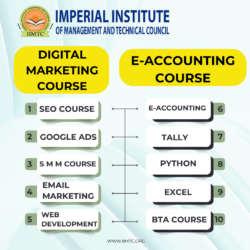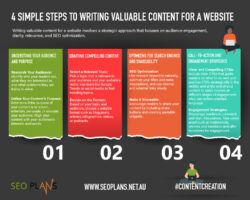How to create high-quality backlinks
Creating backlinks is a crucial part of improving your website’s SEO and increasing its authority. Backlinks are links from other websites that point to your site, and search engines like Google view these links as a vote of confidence for your content. Below are key methods and strategies for creating backlinks effectively:
1. Guest Posting
- What it is: Writing articles for other websites and including a link back to your site.
- How to do it:
- Identify relevant, high-authority websites in your industry that accept guest posts.
- Pitch your article ideas to the website owners or editors.
- Write high-quality, valuable content and include a link to your website, either within the article or in the author bio section.
- Benefits: Earns backlinks from reputable sites and drives referral traffic.
2. Create High-Quality, Shareable Content
- What it is: Producing content that is valuable, unique, and worth sharing, which encourages other sites to link to it.
- How to do it:
- Focus on producing in-depth articles, guides, infographics, videos, or original research that stands out in your niche.
- Optimize the content with useful information, appealing visuals, and interactive elements.
- Promote it on social media, email newsletters, and through outreach to bloggers or influencers.
- Benefits: Natural backlinks from other sites that find your content helpful.
3. Broken Link Building
- What it is: Finding broken links on other websites and suggesting they replace those links with ones to your site’s relevant content.
- How to do it:
- Use tools like Ahrefs, Check My Links, or Screaming Frog to find broken links on relevant websites.
- Create or identify content on your site that matches the broken link’s subject.
- Reach out to the site owner, point out the broken link, and suggest replacing it with your content.
- Benefits: Helps other webmasters while earning quality backlinks for your site.
4. Skyscraper Technique
- What it is: Creating better versions of top-performing content in your niche and getting backlinks by promoting your improved content.
- How to do it:
- Use tools like BuzzSumo or Ahrefs to identify popular content in your niche that has many backlinks.
- Create a more in-depth, updated, or visually appealing version of the content.
- Reach out to the websites linking to the original content and suggest they link to your superior version.
- Benefits: Helps you earn high-quality backlinks from authoritative sources.
5. Directory Submissions
- What it is: Submitting your website to online directories to gain backlinks.
- How to do it:
- Research niche or industry-specific directories relevant to your website.
- Ensure that the directories are credible and not seen as spammy or low quality.
- Submit your website with proper descriptions and contact information.
- Benefits: Provides easy backlinks, especially from niche-relevant directories.
6. HARO (Help a Reporter Out)
- What it is: A platform where reporters ask for expert input, and you can provide quotes or insights to be featured in articles, often with a backlink.
- How to do it:
- Sign up for HARO (Help a Reporter Out).
- Look for requests relevant to your expertise.
- Respond promptly with valuable insights or expert opinions, which could result in a mention and backlink.
- Benefits: Earns backlinks from high-authority websites, including media outlets.
7. Social Media and Content Promotion
- What it is: Sharing your content on social media to increase its visibility and chances of being linked to.
- How to do it:
- Share your articles, videos, or infographics across social media platforms like Twitter, LinkedIn, Facebook, and Pinterest.
- Engage with relevant communities, groups, and forums to encourage sharing and backlinking.
- Use hashtags and tag influencers to boost visibility.
- Benefits: Increases the chances of earning natural backlinks as your content gains visibility.
8. Resource Page Link Building
- What it is: Many websites have resource pages listing valuable links and resources in a specific niche. You can get your content listed on these pages.
- How to do it:
- Search for resource pages in your industry using terms like “best [industry] resources” or “top [niche] tools.”
- Contact the site owner, suggesting your content as a valuable addition to their resource list.
- Benefits: Can earn backlinks from high-authority resource pages, often with minimal effort.
9. Reach Out for Unlinked Brand Mentions
- What it is: Sometimes, other websites mention your brand without linking back to your website.
- How to do it:
- Use tools like Google Alerts or Ahrefs to track brand mentions.
- Reach out to the site owner or author and politely ask them to add a link to your site where your brand was mentioned.
- Benefits: An easy way to turn existing mentions into backlinks.
10. Testimonials and Reviews
- What it is: Providing testimonials or reviews for products, services, or companies in your industry in exchange for a backlink.
- How to do it:
- Write a genuine testimonial or review for a product or service you’ve used.
- Send it to the company, and many times they’ll feature your testimonial on their site, including a backlink.
- Benefits: Earns backlinks from authoritative companies while building business relationships.
11. Influencer Outreach and Collaborations
- What it is: Partnering with influencers, bloggers, or industry leaders to create content or reviews that include backlinks to your site.
- How to do it:
- Identify influencers or bloggers who have an audience relevant to your business.
- Reach out to collaborate on guest posts, product reviews, interviews, or content partnerships.
- Provide them with valuable information, products, or services, and request a backlink in return.
- Benefits: Increases exposure and earns backlinks from trusted, niche-relevant websites.
12. Infographics and Visual Content
- What it is: Creating engaging visual content like infographics that other websites can use and link back to your site.
- How to do it:
- Design visually appealing and informative infographics or other visual content.
- Share them widely, offering the content to other bloggers, news outlets, or niche sites in exchange for a link back to your site.
- Benefits: Infographics and visuals are highly shareable, making it easier to earn backlinks naturally.
13. Host or Sponsor Webinars/Events
- What it is: Hosting or sponsoring online or offline events can help you earn backlinks from event promotion pages or press coverage.
- How to do it:
- Organize webinars, virtual workshops, or sponsor events in your industry.
- Ensure that the event promotions include backlinks to your website.
- Collaborate with other organizations or websites that will mention and link to your event.
- Benefits: Builds authority and earns backlinks from reputable event pages.
14. Offer Free Tools or Resources
- What it is: Creating free tools, templates, or resources for your audience to use, which encourages other websites to link to your tool.
- How to do it:
- Develop a tool, calculator, or template that provides real value to your audience.
- Promote it widely, making sure that websites offering similar resources link back to your free tool.
- Benefits: High-quality backlinks from relevant websites that share your tool as a resource.
Conclusion:
Creating backlinks requires effort and a strategic approach. You can attract backlinks from reputable, authoritative sources by leveraging high-quality content, outreach, and relationship-building. The key is to naturally earn links by providing value to others through content, partnerships, or helping solve problems.
























































